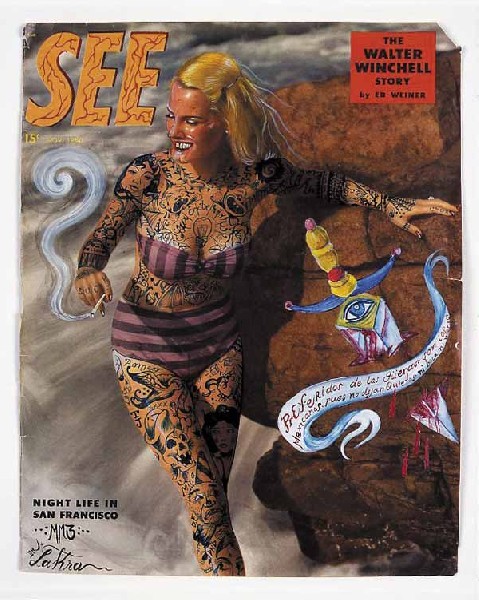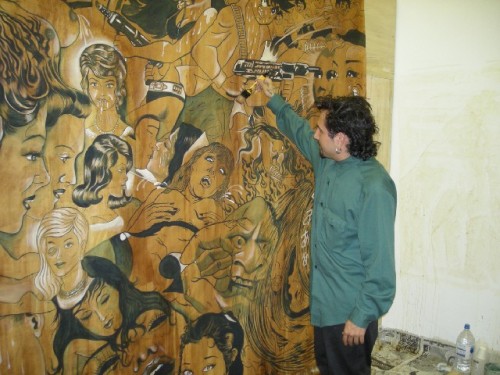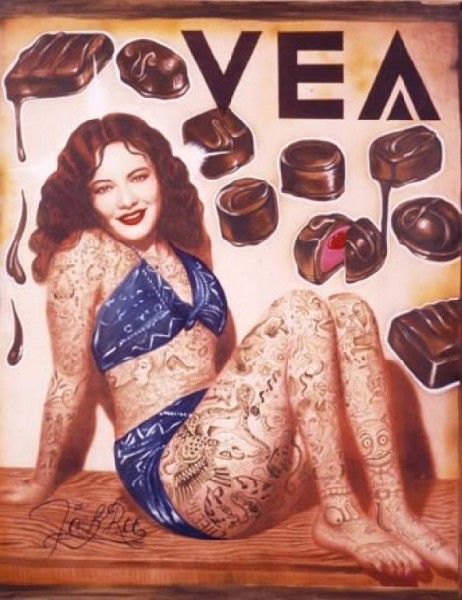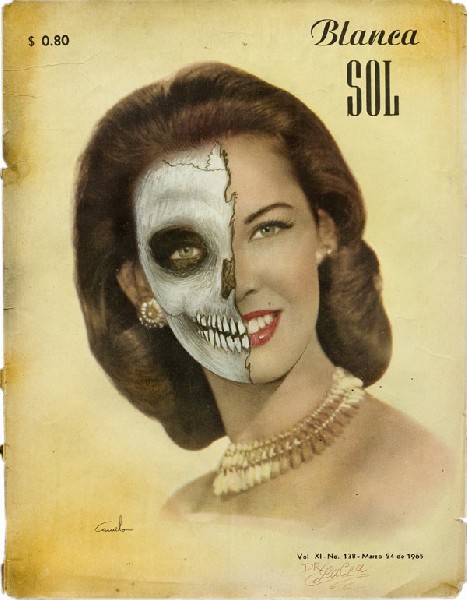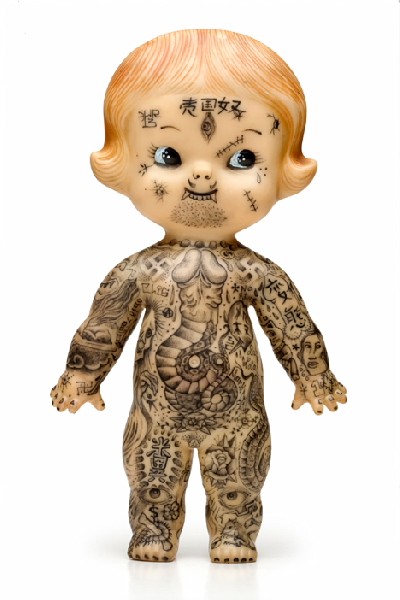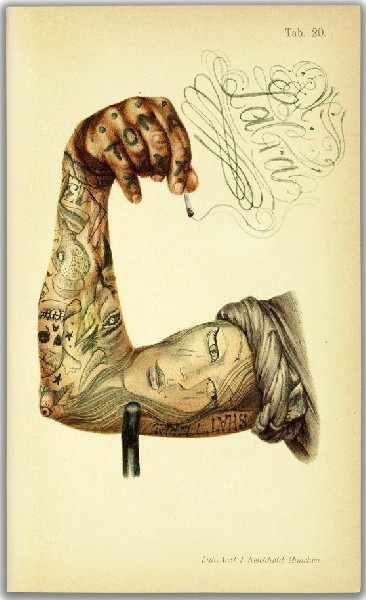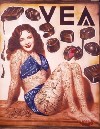Dr. Lakra at Institute of Contemporary Art
Tattoos Blurring Cultural and Art Forms
By: Mark Favermann - May 04, 2010
DR. LAKRA at the ICA, Boston
APRIL 14 – SEPT. 6, 2010
Tattoos are among the oldest forms of human expression. Different cultures have used tattooing as rites of passage, tribal identification and personal and sexual identity. A tattoo is a marking made by inserting indelible ink into the dermis layer of the skin usually by needles or sharp pointed tools to change the pigament. This is done for decoration or symbolism. Practiced for centuries worldwide, the use of tattoos transcends races and geographical settings.
For the next few months, the ICA is presenting the first U.S. solo exhibition of Dr. Lakra, a Mexico-based artist and world-renowned tattooist. Actually, he is an artist who uses the tattoo as his medium of choice. In Dr. Lakra’s work, the idealized images of 1950s pin-up girls, wrestlers (luchadors) and Mexican businessmen are tattooed with drawings of demons, skulls, snakes and spiders.
No surface escapes the artist’s pen—everything from vintage magazines and Japanese prints to plastic cups and Kewpie dolls are covered with his provocative and macabre drawings. The work combines a diverse range of patterns and symbols—such as Chicano, Maori, Thai and ancient Aztec imagery—with pop culture and erotica to create a tantalizing mix of life, death and desire.
The Dr. Lakra exhibit covers over 60 works, including a new mural-size drawing that will cover an entire wall. The exhibition is organized by independent curator Pedro Alonzo (who also co-curated the Shepherd Fairey exhibition of 2009) with assistance from ICA Curatorial Associate Bridget Hanson.
“Bold, playful, and always original, Dr. Lakra’s work crosses cultures, challenges social norms and explores individual and collective identity,” says ICA Director Jill Medvedow. “With nearly one-third of young people in the U.S. sporting a tattoo, Dr. Lakra offers unique perspective on our contemporary fascination with this art.”
“While Dr. Lakra is well-known for his work as a tattooist, he considers himself first and foremost a draftsman,” says Alonzo. “His influences embrace the rich history of illustration in Mexico, as well as comics, graphic novels, and pulp fiction. In his work, the iconic Day of the Dead images of Manuel Manilla and José Guadalupe Posada meet the overt sexuality of R. Crumb.”
Dr. Lakra has traveled from California to Thailand to the Philippines to work with artists still practicing traditional tattooing techniques. His irreverent works explore the tensions between social structures and innate desires, the group and the individual, sacred and secular. Juxtapositions of sex and death, old and new abound, as grotesque creatures encircle seductive women and society figures bear the symbols of fierce modern-day gangs. According to the curators, even the artist’s pseudonym, inspired by his habit of carrying tattoo equipment in a black doctor’s bag, is a clash of opposites: lakra, a Spanish colloquialism meaning “delinquent,” follows a title that commands respect.
“I see my work, my tattoo work and other formats, as a mixture of different iconographies from different cultures and places,” says Dr. Lakra. “I’m always trying to deal with this basic primal urge. Primitive instincts like sex, violence, graffiti, are all innate to human beings and not tied to one culture.”
Dr. Lakra was born in Mexico in 1972. His real name is Jerónimo López Ramírez. He signs his work as Dr. Lakra, which loosely translates as “Dr. Delinquent.” The son of the Mexican-born painter, Francisco Toledo, Dr. Lakra studied with Gabriel Orozco in the late 1980s as part of a weekly workshop that also included Damian Ortega, Abraham Cruzvillegas and Gabriel Kuri. The artist’s work is in the permanent collections of the Museum of Modern Art, the Hammer Museum and the Walker Art Center, and has been featured in exhibitions at the Tate Modern, London (2005) and the Museum of Contemporary Art, Chicago (2007). Dr. Lakra lives and works in Oaxaca, Mexico. His Mexican heritage and all that it means is a hardwired theme in his art.
Dr. Lakra is an anthropological illustrator rendering cultural references and symbolism to the "skin" of archival images from photos, magazines, advertising, Kewpie dolls and photomontages. Of their generation, his creative work is another form of street art in a different but similarly strong statement way that the works of Banksy, Shepherd Fairey, Space Invader and Ron English are expressive and personal while touching universal chords. It is muy macho with a bit of wit while being an art that has a salsa caliente of sensibility. However, there is also a creepiness that pervades much of it, the rot of roadkill, the underbelly of life exposed and the almost magnetic fascination of a zombie horror film. The Day of the Dead (Dia de los Meurtos) seems to be celebrated each day in his artwork. Yet, it functions visually, culturally and sometimes brilliantly. His art may not be as exterior-sited as the other prominent contemporary street artists, but Dr. Lakra's often dark inner landscapes are as poignant, graphic and visually provoking as their best works.


